Last updated on March 14, 2024
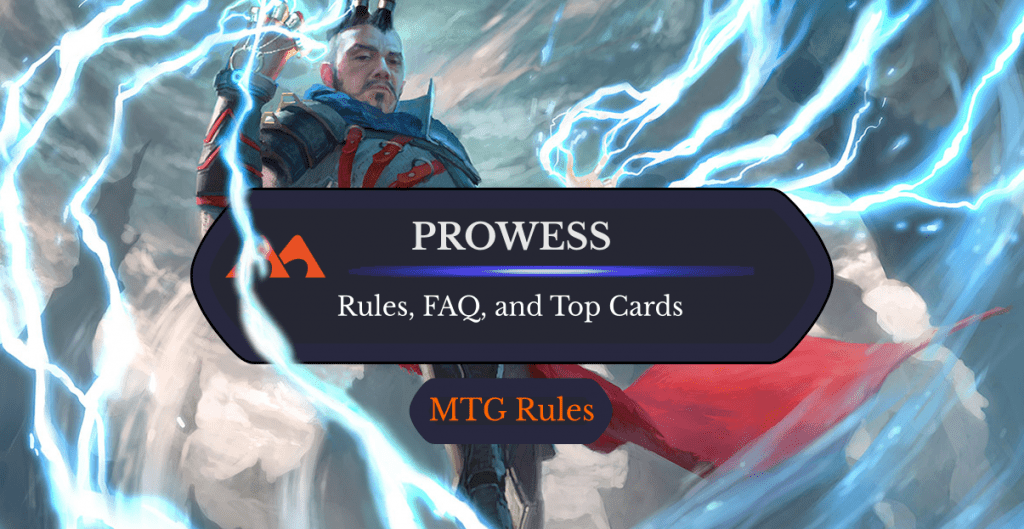
Stormchaser Mage | Illustration by Clint Cearley
Magic is more than 30 years old and has over four million players (probably more) all over the world. To stay this popular, WotC does its best to improve the game by introducing new mechanics in every set. This is a great way to spice things up so that players don’t get bored and always have new ways to enjoy the game. However, not all mechanics are created equally, and some are more powerful than others. Some are even called “broken” and never again seen in new sets.
It’s time to go over one mechanic that’s been considered oppressive and has only been printed in a handful of sets to keep it in check. Let’s dig into prowess and how this single word changed how Magic is played!
How Does Prowess Work?

Shu Yun, the Silent Tempest | Illustration by David Gaillet
Prowess is a triggered ability that gives a creature +1/+1 whenever its controller casts a non-creature spell. If a creature has multiple instances of prowess, each instance triggers separately. This ability doesn’t have any restriction on how many times it can be triggered each turn. Prowess can even be triggered on your opponent’s turn as long as its conditions are met.
Let’s say you have 1/1 double strike creature with prowess in play. If you cast Giant Growth on it, it gets +3/+3 from the Growth plus an additional +1/+1 from its prowess, turning your innocent 1/1 into a 5/5 that can threaten 10 damage. What if you cast an extra combat trick or a counterspell to protect your creature? Additional prowess triggers stack accordingly, and your creature just gets bigger and bigger.
Scary, right? If you aren’t convinced yet about how powerful this ability is, I’ll dig into it a bit more and explain why. But first, let’s cover some basics.
The History of Prowess in MTG
The keyword “prowess” was introduced in September 2014 with Khans of Tarkir to play with the color pie and buff blue with a combat-relevant keyword that didn’t involve evasion. This is a Jeskai mechanic so it’s primarily seen in blue followed by red, with white in last, as seen in cards like Jeskai Student, one of the first cards ever printed with the keyword. The first pro decks with prowess appeared in Pro Tour Khans of Tarkir, featuring multiple strategies that involved the keyword as their core mechanic.
Since then, we've seen prowess across multiple sets like Kaladesh and Amonkhet. It was declared an evergreen mechanic with the release of Magic Origins, though it was phased out again after Hour of Devastation. It's now considered a deciduous mechanic, meaning it can show up as the designers see fit, but shouldn't be expected in every new set.
What Card Types Trigger Prowess?
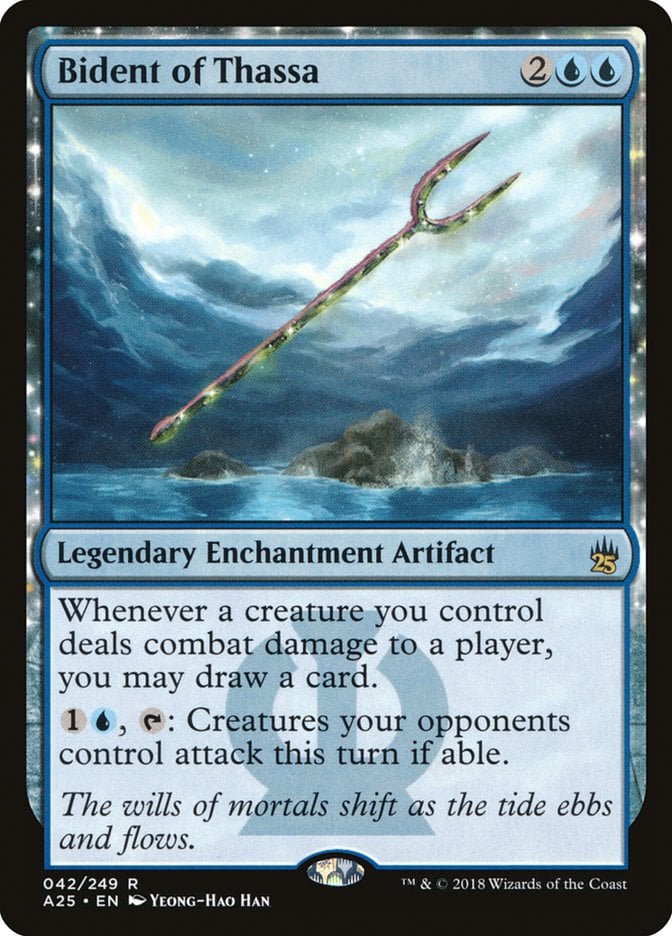
Casting and card that isn’t a creature or land will trigger prowess. However, a non-creature card will only trigger prowess once, even if it has more than one non-creature type. For example, an enchantment artifact only triggers one instance of prowess.
Is Prowess Evergreen?
No, it’s been phased out from being evergreen since it doesn’t play well in some sets that are either creature-oriented or overlap with mechanics like historic from Dominaria. It’s still being used in supplemental sets like Commander products and general sets that don’t have a particular theme, like Core Sets.
Evergreen is a term for keyword abilities that can be used on any set. Haste, trample, and deathtouch are examples of evergreen mechanics. Prowess is what's called a deciduous mechanic, one that can appear from time to time but isn't guaranteed in every set.
Has Prowess Been Removed from MTG? Was it too Powerful?
Prowess hasn’t been removed from the game. It’s been demoted to a deciduous mechanic since there isn't enough design space in each set.
The problem is not how strong the keyword is, but how it interacts with a set’s general theme. For example, a card with prowess fits exceptionally well in an artifact-heavy set (Wing Commando in The Brothers' War, for example), while it’s underwhelming in a creature-dense one.
Does Prowess Stack?
Yes, prowess stacks. The ability will trigger every time you cast a noncreature spell. If you cast more than one noncreature spell, prowess will trigger once for each spell cast and add that many +1/+1 pumps to its creature for the turn.
Multiple instances of prowess stack as well. If you control Monastery Swiftspear and Narset, Enlightened Exile at the same time, Swiftspear will get two prowess triggers when you cast a non-creature spell.
Is Prowess a Triggered Ability?
Yes, prowess triggers every time the controller of a creature with prowess casts a non-creature spell. It goes to the stack on top of the spell that triggered it, and it resolves even if the spell gets countered or fizzles. One tip is to maintain priority and cast additional spells that can trigger more prowess.
Can You Respond to a Prowess Trigger?
Yes, you can respond to prowess triggers. It goes onto the stack like any other triggered ability.
How Does Prowess Work with Rebound?
Rebound is a keyword ability that allows an instant or sorcery spell to be cast a second time. Since the spell is still being cast, it triggers prowess a second time when this happens.
Magecraft vs. Prowess: What if You Copy a Spell?
These two abilities are very similar, but magecraft narrows the “range” of the ability to only instant and sorcery spells and also counts copied spells. Most copied spells go on the stack without being cast; in this case the copied spell won’t trigger prowess.
Additionally, magecraft abilities have different effects, while prowess is the same among all cards with the ability.
Do Enchantment Creatures Trigger Prowess?
Enchantment creatures are still creatures, so they won’t trigger prowess. The same goes for artifact creatures.
Do You Have to Announce Prowess Triggers?
Yes, every triggered ability should be announced to maintain a clean game state. But the effect won't have a “visible impact” on the board state and may not need to be directly mentioned until something relevant happens (combat, someone takes damage, etc) in some paper tournament situations.
Does Cascade Count as Casting?
Yes, cards you cast off of a cascade trigger will trigger prowess. Cascade is a mechanic which allows you to cast a spell with a mana value less than the card with cascade for free, which counts as casting.
Best Prowess Cards
Monastery Mentor
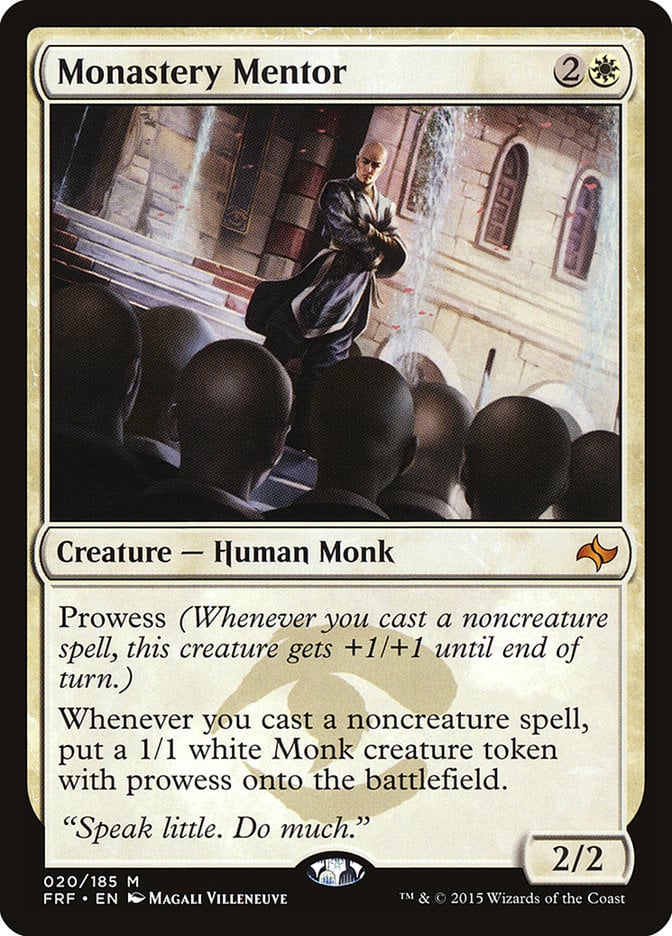
Left to its own devices, Monastery Mentor can create a small army that can take over the game in just a couple turns. It sees plays mostly in Vintage since most spells are free to cast, and you can cheat this powerhouse on turn 1 and even create a couple of creatures in the same turn!
Monastery Swiftspear
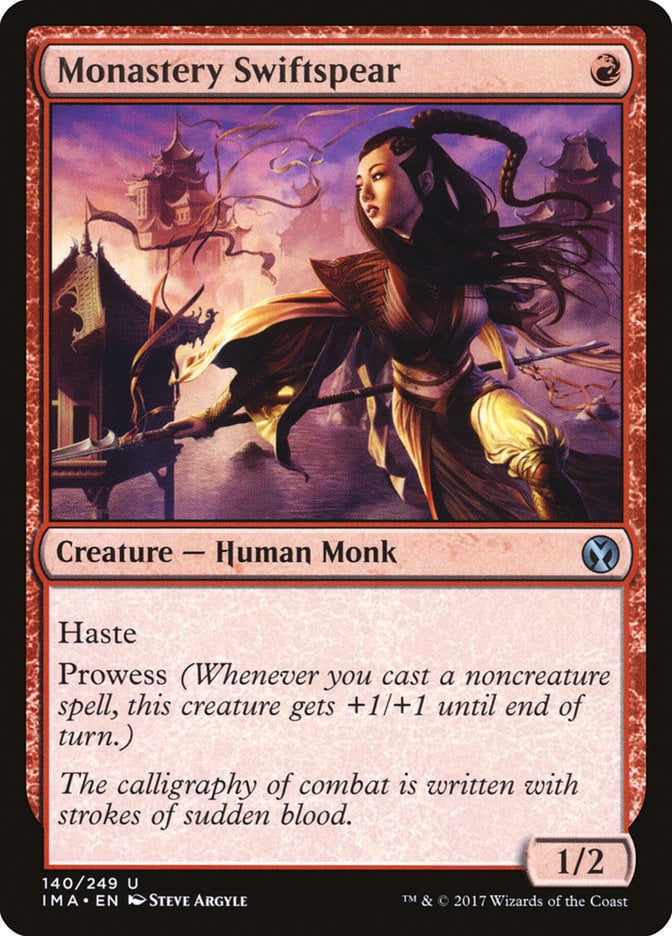
Where do I start with Monastery Swiftspear? It’s one of the most iconic cards in all the formats it’s touched. From Standard to Modern and even Legacy, Swiftspear has sent tons of players packing as it’s been a powerhouse since it was introduced. The fact that it’s very cheap and has haste makes it a treat that gets very scary in multiples, and it’s a signature in every burn deck where it can be played, including Pauper
Shu Yun, the Silent Tempest
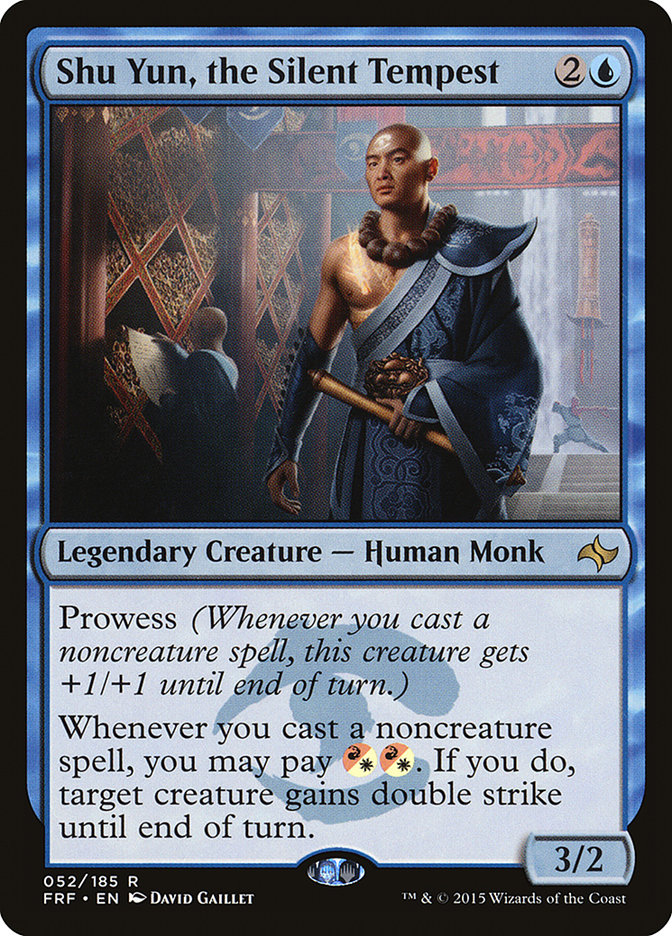
When Shu Yun, the Silent Tempest was first introduced, a new game mode called “Tiny Leaders” was born. This format is very similar to Commander with one restriction: Only cards with a mana value of 3 or less can be played. As a commander, Shu Yun was the best of the best.
The format isn’t supported anymore, but that hasn’t kept players from brewing Commander decks around this powerful and silent creature.
Soul-Scar Mage
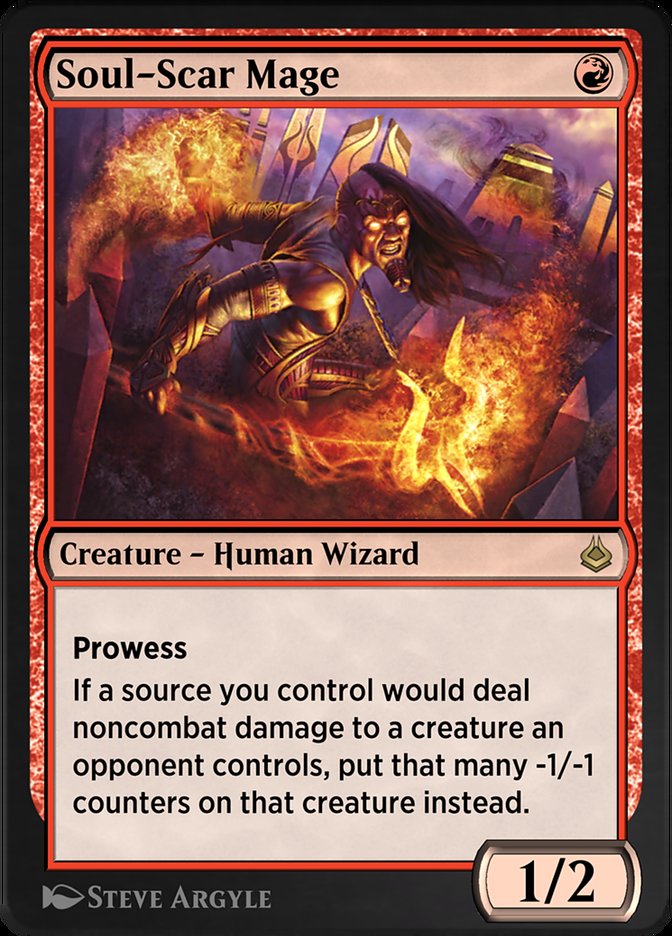
Soul-Scar Mage is very similar to Monastery Swiftspear, just without haste. It has an incredible ability that can slowly shrink your opponent’s creatures, even if your burn spells can’t kill them. It’s mostly seen in Historic and Pioneer decks, but it also appears in non-burn mono red aggro Modern decks from time to time.
Stormwing Entity
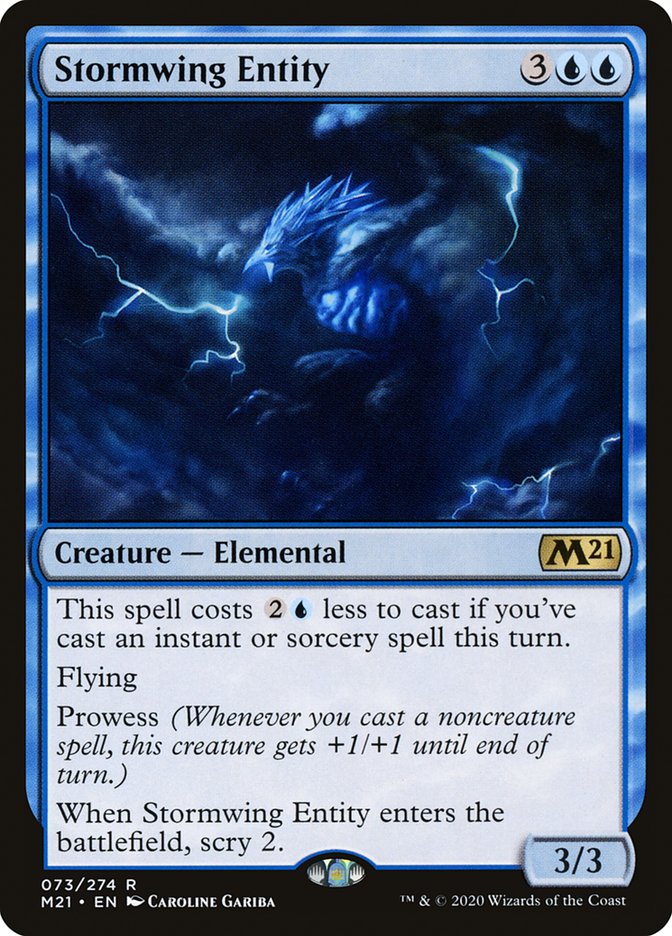
Last but not least, we encounter a big bird that gets even bigger with every cheap spell cast: Stormwing Entity. Not to mention that you can cheat this blue elemental into play a couple turns early with the help of a cantrip. This card along with Arclight Phoenix pushed WotC to ban Brainstorm from Historic since it was a very dominant strategy. The Entity’s deck remains strong even after the bans, which means it still has a nest in the current Historic metagame.
Bonus: Some Prowess Builds
If you’re curious about the top decks that use this mechanic, look no further! Here are a couple lists that use it to the best of its ability.
Modern: Izzet Blitz
Creatures (17)
Dragon's Rage Channeler x4
Monastery Swiftspear x4
Soul-Scar Mage x3
Sprite Dragon x2
Stormwing Entity x3
Bedlam Reveler
Instants (17)
Vapor Snag
Lava Dart x4
Lightning Bolt x4
Unholy Heat x2
Mutagenic Growth x2
Manamorphose x4
Sorceries (4)
Artifacts (4)
Lands (18)
Arid Mesa x2
Bloodstained Mire
Fiery Islet x3
Mountain x4
Scalding Tarn x2
Spirebluff Canal x4
Steam Vents x2
Sideboard (15)
Seasoned Pyromancer
Shattering Spree x2
Dispel
Spell Pierce x2
Surgical Extraction
Abrade x2
Kozilek's Return
Alpine Moon
Threads of Disloyalty
Blood Moon x2
Tormod's Crypt
This deck runs four of the best prowess cards: Bedlam Reveler, Monastery Swiftspear, Soul-Scar Mage, and Stormwing Entity are all here and paired up with spells that cost 0 mana like Mutagenic Growth and Lava Dart. It’s no surprise that matches end by turn 3.
Commander 1v1: Shu Yun a.k.a. “One Punch Man”
Commander (1)
Instants (37)
Ajani's Presence
Defiant Strike
Enshrouding Mist
Gods Willing
Path to Exile
Swords to Plowshares
Aerial Formation
Brainstorm
Defy Gravity
Dispel
High Tide
Infiltrate
Mystical Tutor
Opt
Spell Pierce
Stifle
Trickery Charm
Gut Shot
Borrowed Hostility
Brute Force
Dynacharge
Infuriate
Rouse the Mob
Titan's Strength
Anticipate
Impulse
Mana Leak
Tale's End
Izzet Charm
Shattering Blow
Brute Strength
Sure Strike
Final Fortune
Chaos Warp
Chance for Glory
Force of Will
Misdirection
Sorceries (12)
Cloak of Feathers
Distortion Strike
Serum Visions
Slip Through Space
Faithless Looting
Seething Anger
Revoke Existence
Last Chance
Warrior's Oath
Compulsive Research
Insult / Injury
Treasure Cruise
Enchantments (4)
Aqueous Form
Cartouche of Zeal
Consuming Fervor
Dragon Mantle
Artifacts (11)
Mana Crypt
Tormod's Crypt
Sol Ring
Azorius Signet
Boros Signet
Isochron Scepter
Izzet Signet
Talisman of Conviction
Talisman of Creativity
Talisman of Progress
Commander's Sphere
Lands (35)
Adarkar Wastes
Arid Mesa
Bloodstained Mire
City of Brass
Command Tower
Flooded Strand
Glacial Fortress
Hallowed Fountain
Island x5
Mana Confluence
Marsh Flats
Misty Rainforest
Mountain x4
Plains x3
Plateau
Polluted Delta
Prismatic Vista
Rogue's Passage
Sacred Foundry
Scalding Tarn
Steam Vents
Sulfur Falls
Tundra
Volcanic Island
Windswept Heath
Wooded Foothills
This deck does one thing and does it right: kill your opponent in one turn. You manage this by chaining together cheap spells that either pump your commander or protect it. You won’t find any other creatures in here as you don’t need them. Once Shu Yun resolves, there are no more turns.
Wrap Up

Shipwreck Dowser | Illustration by Caroline Gariba
I love this mechanic. You can build around it and it’s perfect for tempo-oriented decks. Now, is it fair? I would say so since Wizards has done good work not combining it with other mechanics or sets that would break it. I wish there were creatures in other colors with prowess or cards that gave prowess to creatures, like equipment or enchantments.
What about you? Do you like this keyword? Do you think it’s fair, or is it broken? Let me know in the comments below! I’d love to see any fun decklists you want to share with prowess. Let’s brew together!
As always, take care and have a good one!
Follow Draftsim for awesome articles and set updates:
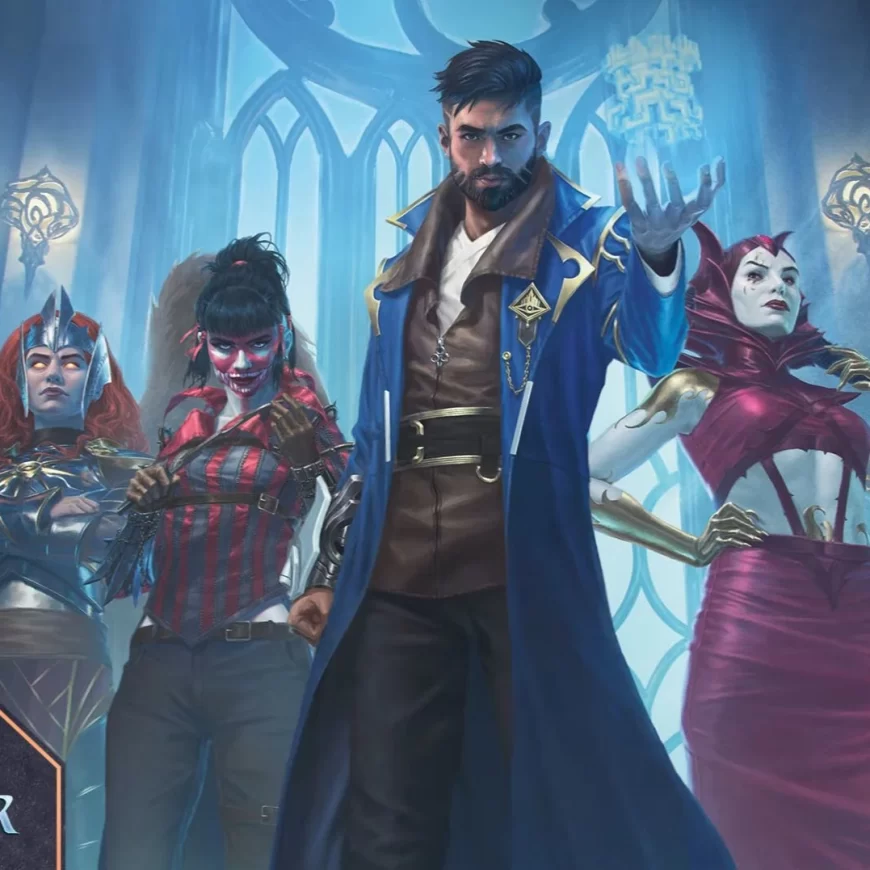
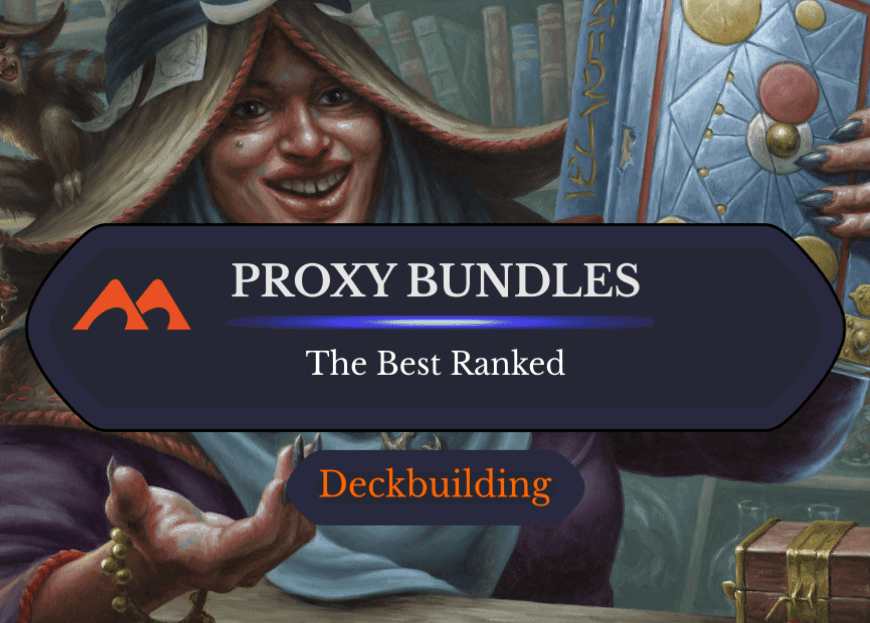
Add Comment